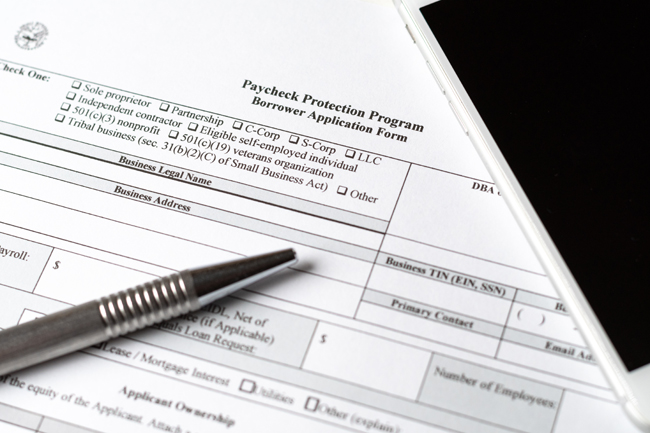
Updated as of 1/13/21
A second round of funds for the Paycheck Protection Program was recently instituted. The latest bill, giving new life to the program, was signed on December 27, 2020. Approximately $284 billion has been allocated to funding the second wave of the program.
1. Covered Period
January 11—applications accepted from small businesses that have not receive PPP funds previously
January 13—small businesses that received PPP loans in the first round and meet eligibility requirements may begin to apply for a second draw
Note: The SBA and U.S. Treasury Department have stated that larger applicants will be able to begin submitting documentation “shortly thereafter,” although a date has not yet been confirmed.
March 31—the application period is set to close
2. Eligibility
First-time PPP Borrowers—
- Must have been in business on February 15, 2020
- Businesses now included:
- Sole proprietors
- Self-employed workers
- Independent contractors
- “Side gig” workers
- News outlets with no more than 500 employees per location
- 501 (c)(6) non-profits and destination marketing organizations, if they meet certain requirements
Note: Publicly traded companies are excluded from this round of PPP funding
Second-time PPP Borrowers—
- Received funds during the initial PPP funding in 2020
- Have 300 or less employees
- Used or will use the full amount of your first PPP loan
- Documented a 25% or greater decrease in gross receipts in any quarter during 2020 as compared to the same quarter in 2019
- Have not permanently closed
Funds will be made available second-draw applicants such as businesses, some non-profits, self-employed persons, sole proprietors, housing cooperatives, small agricultural cooperatives, veterans’ organizations and tribal businesses.
3. Applying for a loan
The first two days of applications will only be accepted from community financial institutions in order to give priority to minority-, women and veteran-owned companies, along with other underserved businesses.
Applicants will be required to submit documents to support the verification of payroll expenses and lost revenue, including but not limited to tax forms or bank statements.
Businesses applying for $150,000 or less and who received funding in the first round will not need to prove revenue reduction, but will need to complete this step when applying for loan forgiveness.
Note: If you are seeking a second draw, you should check with your previous lender to see if they are participating in second-draw loans. This may expedite some of the process.
You will need to apply through an SBA-approved lender. There are no applications fees associated with obtaining a PPP loan.
4. Interest rate
If approved, your covered loan will bear interest at a rate of 1.0% per annum.
5. Maximum loan amount
First-time borrowers are eligible for up to a maximum of $10 million and loans for second-draw applicants will max out at $2 million.
To calculate your maximum loan amount:
- 5 x the average monthly payments made by your law firm for payroll costs, as calculated by using one of the following:
- Prior 12 months before loan application
- 2019 calendar year
- 2020 calendar year
Note: The foregoing differs for newer and seasonal businesses.
- Seasonal businesses may calculate average total monthly payroll cost by selecting any 12-week timeframe between February 15, 2019 and February 15, 2020
- New businesses will report total payroll expense averaged over the number of months during which the wages were paid.
Note: Accommodation and food services operations, including hotels and restaurants, are eligible to borrow up to 3.5x their average monthly payroll expenses.
6. Use of proceeds
In order to apply for loan forgiveness, second-draw funding must be used for approved costs, such as:
- Wages, insurance benefits and paid sick leave as paid by the employer
- Mortgage payments, rent, utilities bills and operating costs including HR and accounting functions, software and other business-related expenses
- Damage to property caused by unrest in 2020 that was not covered by insurance
- Supplier payments for contracts and purchase orders in place prior to applying for the second round of funding
- PPE and other accommodations made in order to adhere to new safety protocols due to COVID-19
Note: 60% of PPP loan proceeds must be used for payroll costs in order to qualify for full loan forgiveness.
7. Loan forgiveness
Funds expended on qualified, covered costs within an eight to 24-week timeframe from the issuance of the loan may be forgiven. As stated above, 60% of expenditures must be to cover payroll costs in order to seek full loan forgiveness; up to 40% of the loan can be used for other qualified expenses.
In order to apply for loan forgiveness, the following will be required.
- For loans less than $150,000, a business must certify:
- Total loan amount
- Documentation of decreased revenue (if not previously provided)
- Funds used for payroll expenses
- How many employees were sustained because of funding
- For loans greater than $150,000, the procedure will be the same as for the first draw of PPP funds and you’ll need to prove how the loan proceeds were utilized by providing
- Documentation of payroll costs and number of persons employed (this may include tax documents, bank records, reports from a payrolls service, etc.)
- Receipts for any/all operating expenses paid by PPP funds
- Payments made to outside vendors
- Expenses incurred in adherence to new safety protocols in the workplace, as a result of the pandemic
You can also stay informed about the Paycheck Protection Program by routinely checking this site and the SBA’s dedicated page.
Neither Counsel Financial nor any of its employees provide tax, legal or financial advice. You should consult with your personal tax, legal or financial advisor regarding your individual circumstances.



